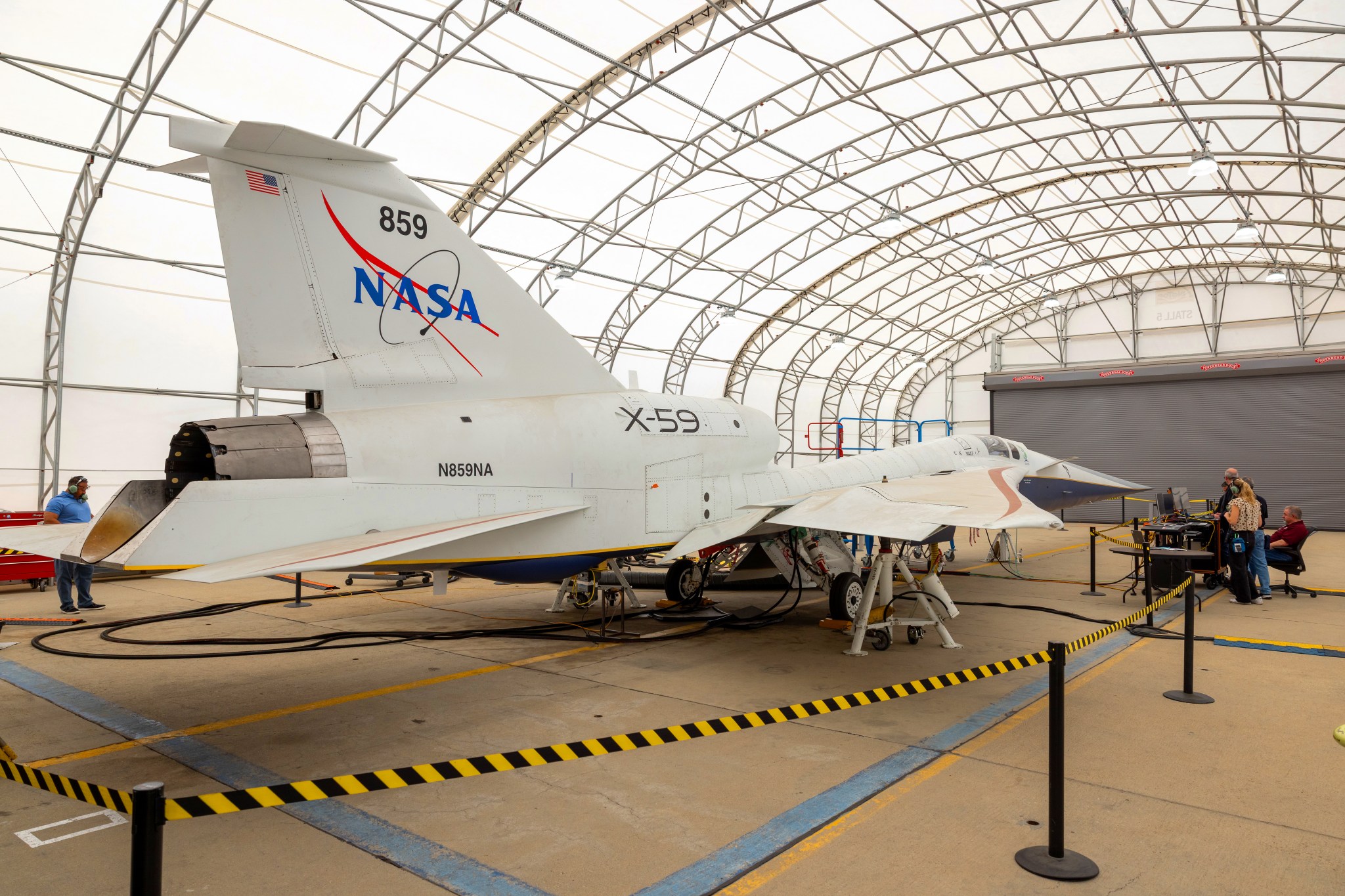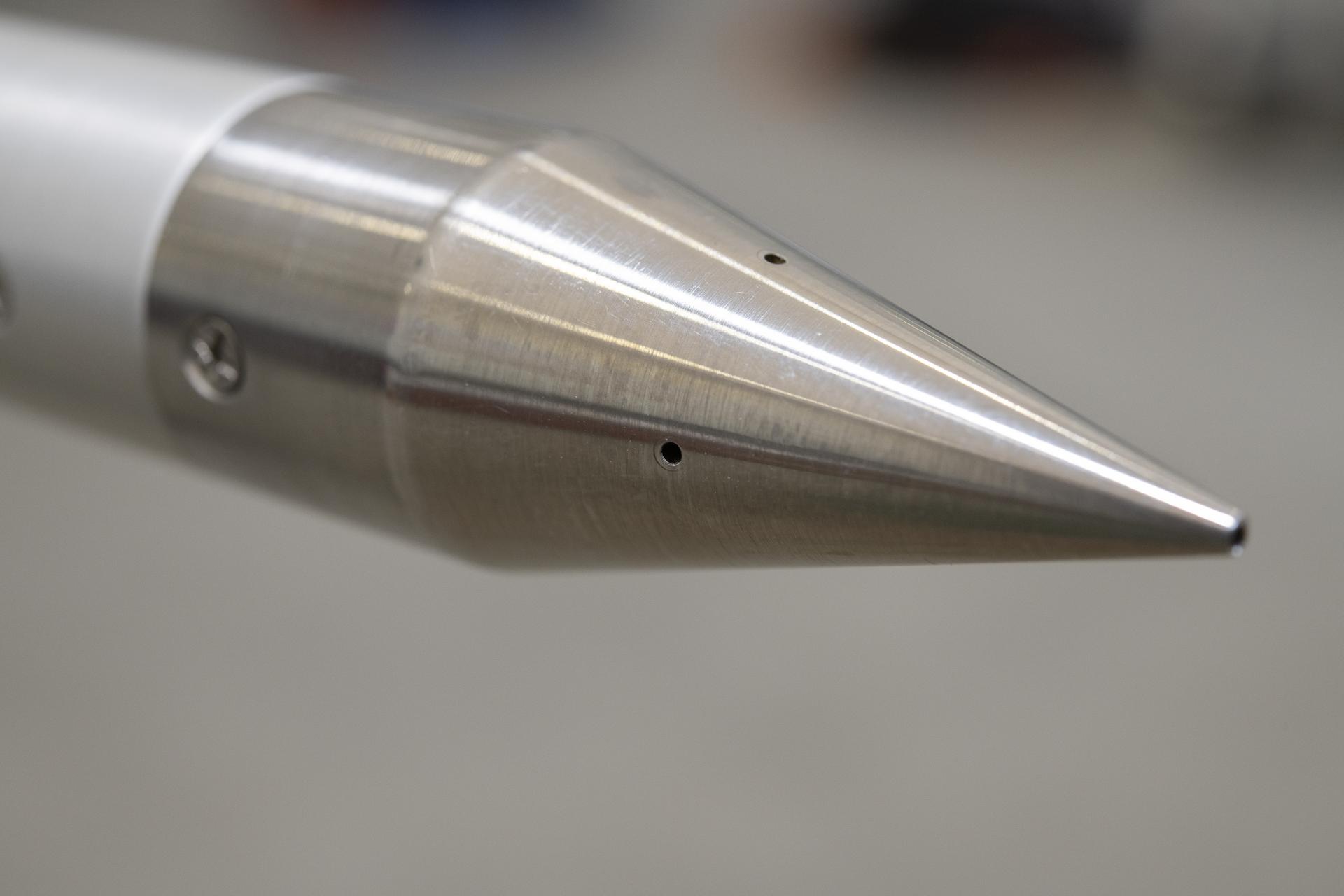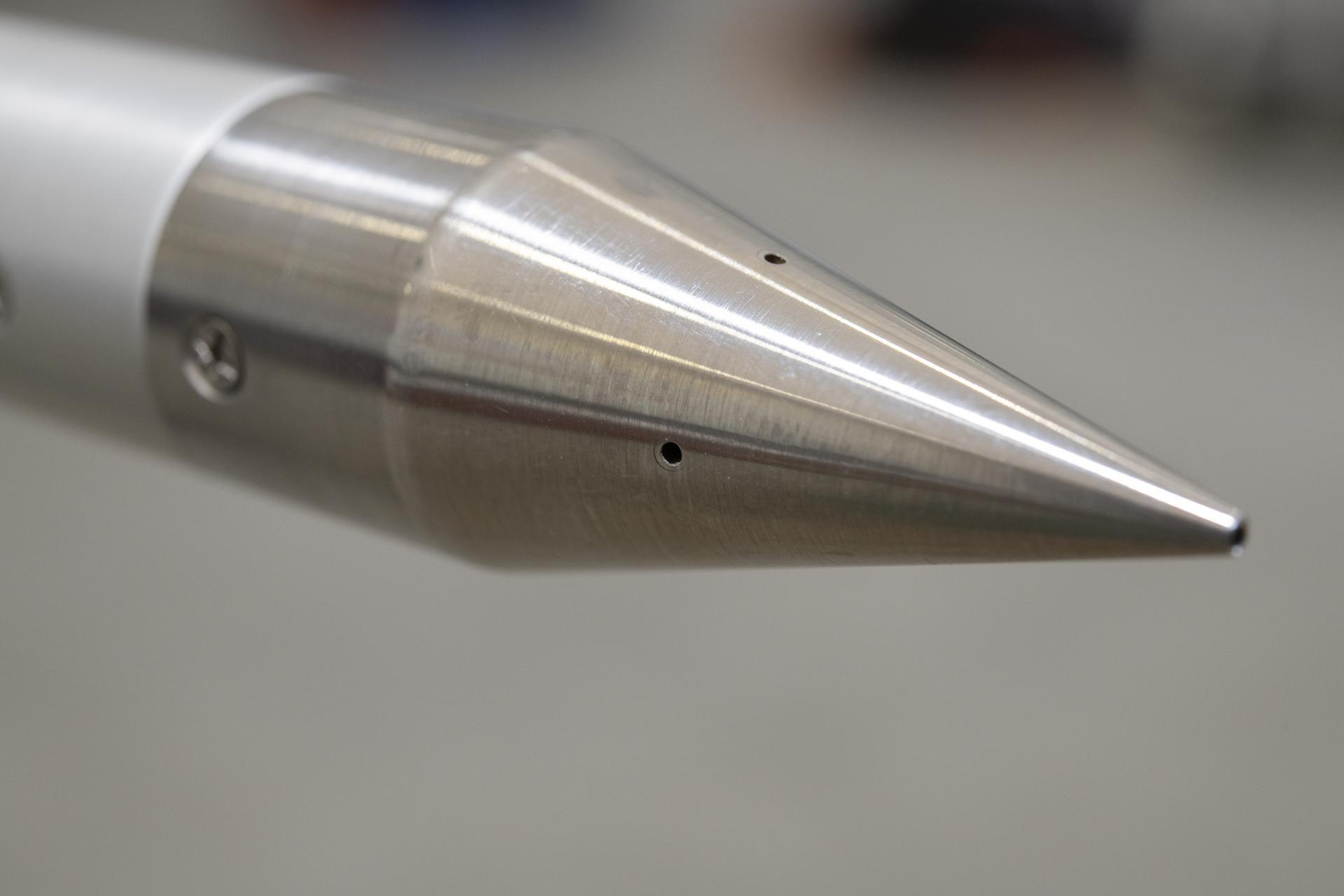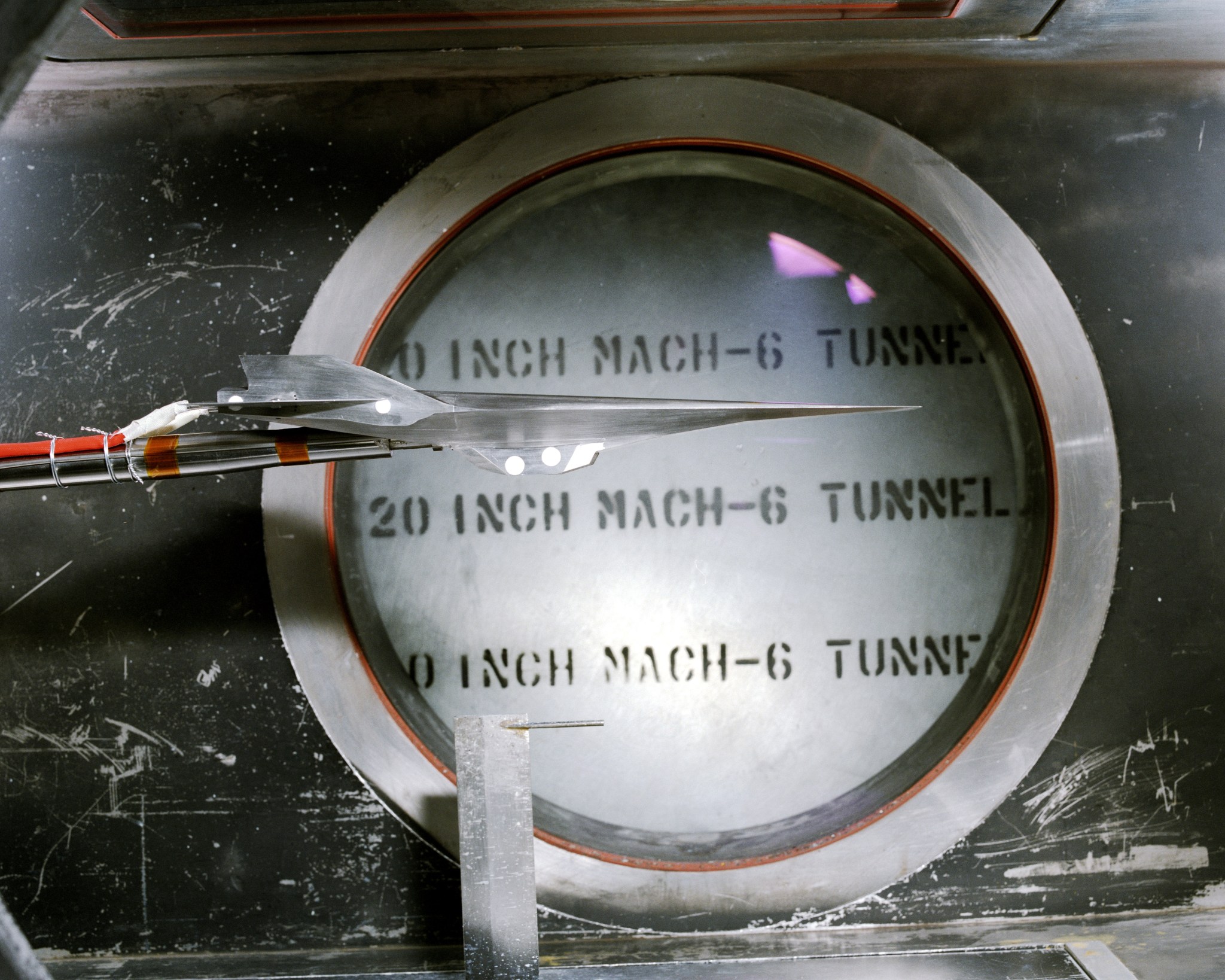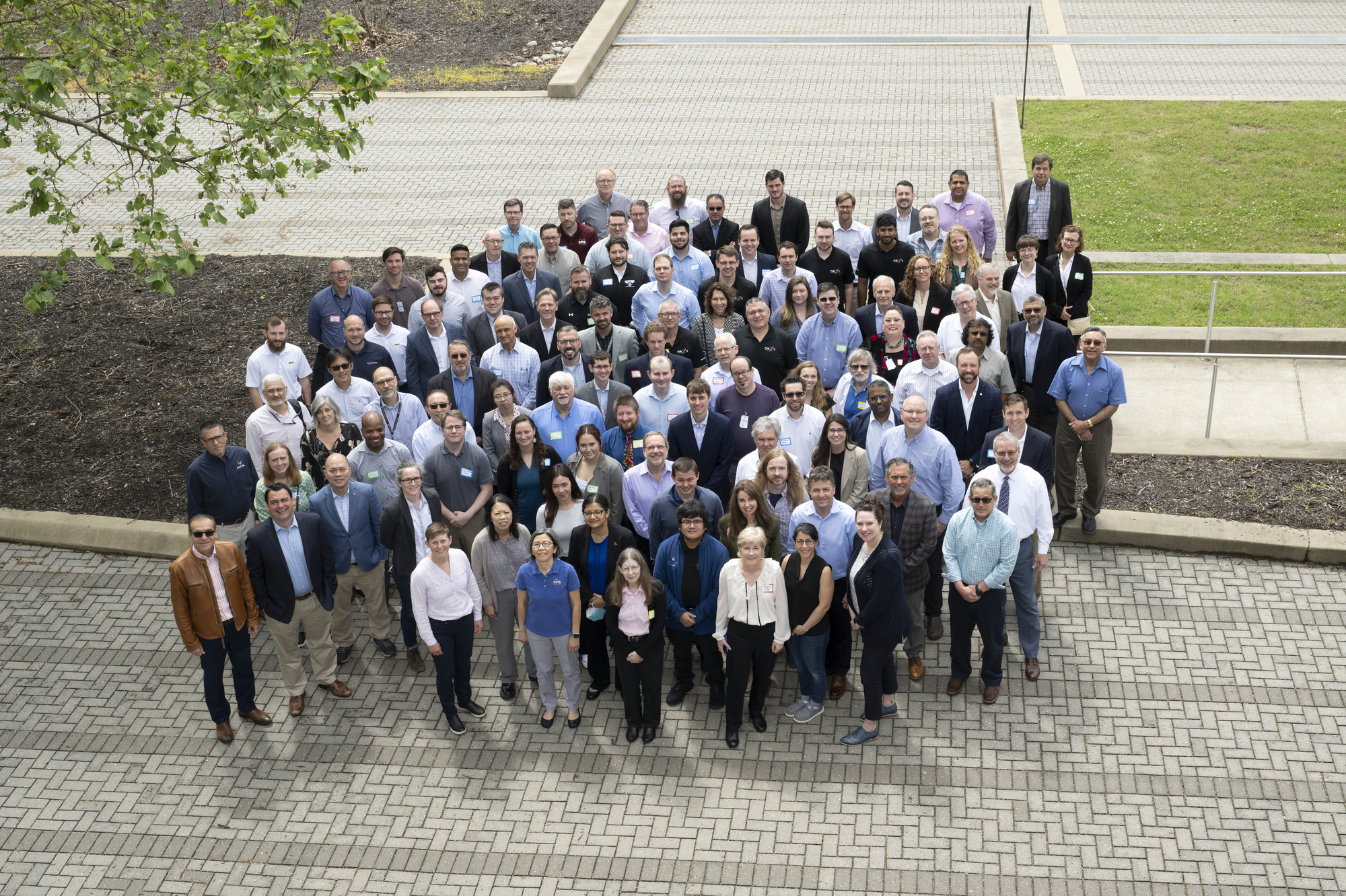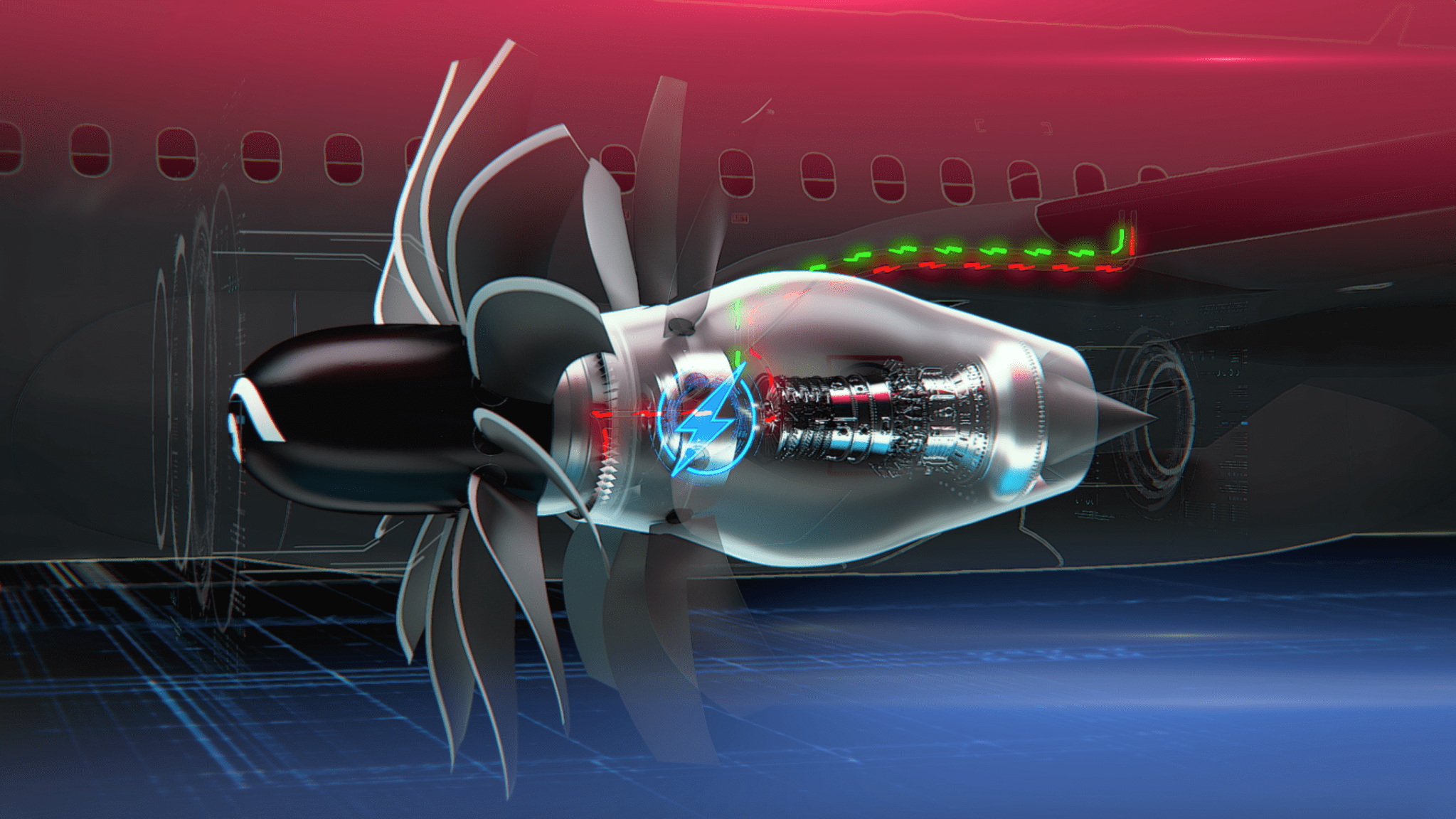5 min read Preparations for Next Moonwalk Simulations Underway (and Underwater) NASA’s X-59 quiet supersonic research aircraft is seen during its “aluminum bird” systems testing at Lockheed Martin’s Skunk Works facility in Palmdale, California. The test verified how the aircraft’s hardware and software work together, responding to pilot inputs and handling injected system failures. Lockheed Martin / Garry Tice NASA’s X-59 quiet supersonic research aircraft successfully completed a critical series of tests in which the airplane was put through its paces for cruising high above the California desert – all…
Read MoreTag: Advanced Air Vehicles Program
La NASA probará tecnología para medir las singulares ondas de choque del X-59
4 min read Preparations for Next Moonwalk Simulations Underway (and Underwater) Un detalle de la sonda de detección de impactos de la NASA resalta sus puertos de presión, diseñados para medir los cambios de presión del aire durante el vuelo supersónico. La sonda se montará en el F-15B de la NASA para realizar vuelos de calibración, validando su capacidad de medir las ondas de choque generadas por el X-59 para la misión Quesst de la NASA. NASA/Lauren Hughes Un F-15B de la NASA realiza un vuelo de calibración de una…
Read MoreNASA to Test Technology for X-59’s Unique Shock Wave Measurements
3 min read Preparations for Next Moonwalk Simulations Underway (and Underwater) A close-up of NASA’s shock-sensing probe highlights its pressure ports, designed to measure air pressure changes during supersonic flight. The probe will be mounted on NASA’s F-15B Aeronautics Research Test Bed for calibration flights, validating its ability to measure shock waves generated by the X 59 as part of NASA’s Quesst mission to provide data on quiet supersonic flight. NASA/Lauren Hughes NASA’s F-15B Aeronautics Research Test Bed performs a calibration flight of the shock-sensing probe over Edwards, California, on…
Read MoreNASA Flips Efficient Wing Concept for Testing
3 min read Preparations for Next Moonwalk Simulations Underway (and Underwater) NASA/Quincy Eggert Upside down can be right side up. That’s what NASA researchers determined for tests of an efficient wing concept that could be part of the agency’s answer to making future aircraft sustainable. Research from NASA’s Advanced Air Transport Technology project involving a 10-foot model could help NASA engineers validate the concept of the Transonic Truss-Braced Wing (TTBW), an aircraft using long, thin wings stabilized by diagonal struts. The TTBW concept’s efficient wings add lift and could result…
Read MoreHypersonic Technology Project Overview
2 min read Preparations for Next Moonwalk Simulations Underway (and Underwater) A steel model of a hypersonic vehicle and sensor in front of a window in a wind tunnel labeled the 20 inch Mach 6 Tunnel. Vehicles that travel at hypersonic speeds fly faster than five times the speed of sound. NASA studies the fundamental science of hypersonics to understand it better and applies this understanding to enable point-to-point and space access hypersonic vehicles. These vehicles would use airbreathing engines, which utilize oxygen in the atmosphere. In the long term,…
Read MoreHypersonics Technical Challenges
2 min read Preparations for Next Moonwalk Simulations Underway (and Underwater) Launch of the Hypersonic International Flight Research Experimentation Program (HIFiRE) Flight 2 sounding rocket, a joint NASA-Air Force Research Laboratory flight experiment, May 1, 2012. Credit: AFRL Technical Challenges (TCs) are finite-duration research and development endeavors supporting the strategic goals of NASA. The Hypersonic Technology project’s Technical Challenges include estimation of uncertainty for hypersonic research problems and vehicle systems, testing controls for switching engines mid-flight, and researching more efficient fuel combustors for large ramjets, which will be needed by…
Read MoreHypersonic Research Topics
2 min read Preparations for Next Moonwalk Simulations Underway (and Underwater) A wireframe image of an aircraft being designed. NASA The Hypersonic Technology project is divided into four research topic areas. The first research topic is system-level design, analysis, and validation, which explores the impacts of technologies on vehicle performance. The second and third topics focus more specifically on propulsion technologies and vehicle technologies enabling hypersonic flight. The fourth topic area explores material technology that can survive and be reused in high-temperature hypersonic flight. System-Level Design and Analysis The System-Level…
Read MoreHigh-Speed Market Studies
2 min read Preparations for Next Moonwalk Simulations Underway (and Underwater) Artist concept of a high-speed point-to-point vehicle. NASA Langley Owing to NASA’s Quesst mission and Commercial Supersonic Technology project, there is growing industry interest in commercial aircraft that fly faster than the speed of sound. In 2020, NASA funded two independent studies to investigate the economic viability of this potential market for high-speed commercial flight. Since then, NASA has funded additional studies to investigate the technology developments needed for these aircraft, as well as the regulatory and certification barriers…
Read MoreHiCAM 2024 Spring Review
1 min read Preparations for Next Moonwalk Simulations Underway (and Underwater) Composites Consortium team members gathered during May 2024 at NASA’s Langley Research Center in Virginia for a technical review of all tasks in progress for the Hi-Rate Composite Aircraft Manufacturing project. NASA and its partners in the Advanced Composites Consortium gathered at the agency’s Langley Research Center in Hampton, Virginia, May 7-9. Team members from 20 organizations across the country recently discussed progress on all technology development tasks underway in NASA’s Hi-Rate Composite Aircraft Manufacturing (HiCAM) project. The project…
Read MoreNASA to Start Designing More Sustainable Jet Engine Core
4 min read Preparations for Next Moonwalk Simulations Underway (and Underwater) This artist concept shows a NASA-developed small-core jet engine installed in General Electric Aerospace’s CFM RISE jet engine design. The more fuel-efficient small core powers a large open turbofan, which also helps increase efficiency. The effort is part of NASA’s Sustainable Flight National Partnership to help inform the next generation of ultra-efficient airliners. GE Aerospace NASA, alongside industry, will soon begin designing a new jet engine concept for the next generation of ultra-efficient airliners — officially graduating to the…
Read More